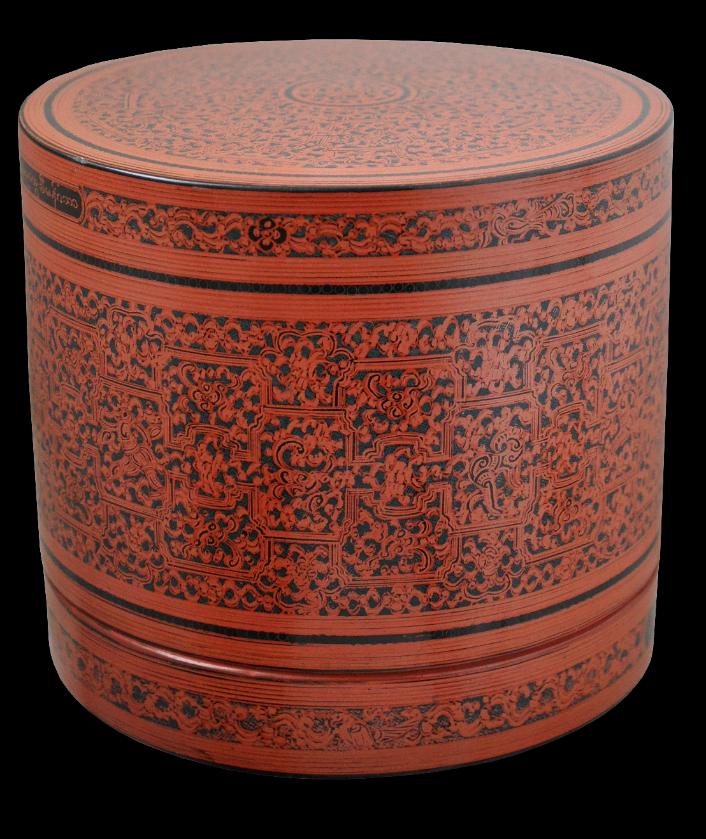
Zulu Knobkerrie Club
Lacquered Betel Box
Burma
mid-20th century or earlier
height: 15cm, diameter: 16cm
This finely decorated betel box is lacquered in orange-red, green-grey and black hues. It is decorated with the repeated, inter-locking geometric myin-mo or Mount Meru pattern. This pattern, named after the mythical mountain at the centre of the Buddhist cosmos comprises inter-locked rectangular elements in-filled with stylised figural elements amid scrollwork.
It also is decorated with cartouches of Burmese script which most probably identify the maker.
The box is in very fine condition.
Betel chewing is a habit that unites Southeast Asia with the Indian sub-continent, parts of southern China and the Western Pacific. Whereas alcohol was associated with feasting, betel was the everyday social lubricant: it was offered to visitors to one’s home. And just as the English developed elaborate tea sets, Indians and Southeast Asians developed elaborate betel nut sets. Betel took on symbolic meaning too and was a central element of traditional marriage ceremonies.
The actual nut comes from the areca palm tree. Typically, it is sliced, mixed with lime (usually obtained from crushed seashells) and then wrapped up in a betel creeper leaf and chewed. The lime reacts with compounds in the nut to produce alkaloids which give a mild narcotic effect. Large amounts of red saliva are also produced which chewers spit out.
In Burma, betel sets were stored and carried in elaborate lacquered boxes such as this example.
References
Fraser-Lu, S., Burmese Crafts: Past and Present, Oxford University Press, 1994.
Fraser-Lu, S.,
Burmese Lacquerware, White Orchid Books, 2000.
Isaacs, R., & T.R. Blurton,
Burma and the Art of Lacquer, River Books, 2000.
Lowry, J.,
Burmese Art, Victoria and Albert Museum, 1974.
Inventory no.: 1524
SOLD



